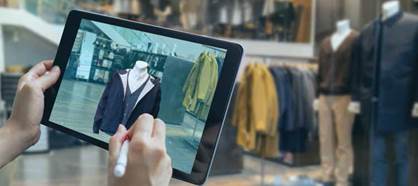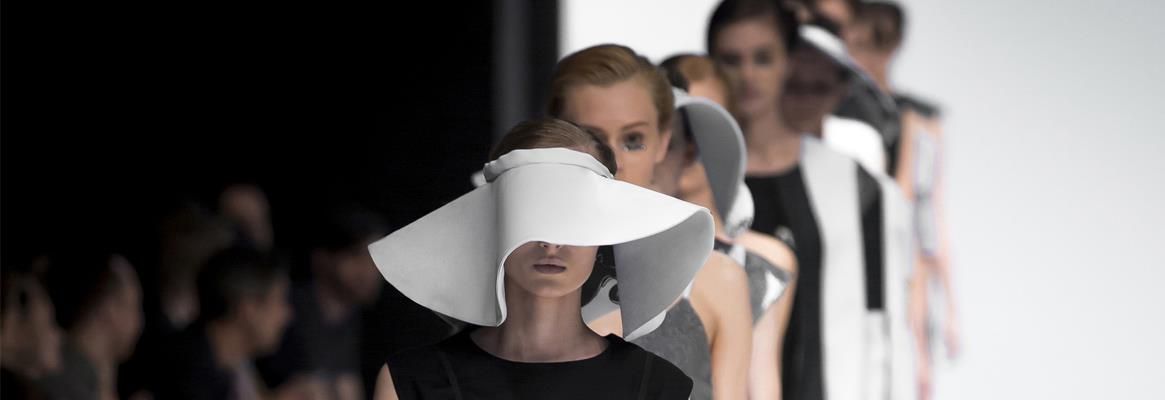COVID-19 has changed the world over the last two years. Years 2020 and 2021 will be remembered for their far-reaching effects on social, economic, cultural, and psychological life. This feature analyses impact of these changes on global fashion and re-imagines its new face in 2022 and beyond.
According to IMF’s October 2021 forecast, global economy is projected to grow 5.9 per cent in 2021and 4.9 per cent in 2022 in contrast to 2020 growth of (-)3.1 per cent. The expanding economic growths signal positive outlook going forward. The positivity weighs even more in the light of past two years of COVID-19 pandemic that disrupted the lives of millions of people across the world sabotaging their livelihoods, while interrupting international trade, travel, economies and consumption patterns. Fashion, being discretionary consumption, was hit even harder.
How fashion was disrupted
Starting from China in 2020, COVID-19 virus spread slowly but steadily throughout rest of the year and in 2021 it released new variants generating fatal waves after waves. Its existence led to continued series of lockdowns, travel restrictions, social distancing and other COVID-appropriate behaviours in various parts of the world. The circumstances left retail industry, fashion segment in particular, in complete disarray impacting sales, profits, inventories, jobs and the entire ecosystem.
Global fashion industry, valued at $3 trillion, constitutes 2 per cent of the word’s GDP and when such an industry is impacted the results are far-reaching. The disruption in global fashion started when people were asked to stay at home as precautionary measure to contain the spread of the virus. To rule out any possibility of their coming out, markets, shopping malls and retail stores were also shut down. This disallowed outside shopping for months forcing the consumers to switch to online shopping. To further worsen the things, the authorities’ world over, allowed online purchase of only essential items, restricting sale of non-essential items, that also included fashion, for a later time. Consequently, fashion sales declined and inventories held up throughout the supply chain. Orders were either cancelled or reduced or diverted to arrest additional losses. Simultaneously, constrained global freights and transportation jeopardised supply chain logistics worldwide. The goods transportation to their destination markets faced challenges and those which could make their way out could move only with increased cost, eating up profit margins. Overcoming all these challenges, when fragmented fashion supplies opened up after sizeable gap the demand for fashion items had taken a 360 degree turn with ‘need’ replacing ‘aspiration’. Luxury and aspiration fashion was not needed anymore and the fashion demand, otherwise widely diverse, narrowed to only essential wearables. Work from home cut down sales of formal wear; no outing dented active wear category; social distancing too restricted fashion, requiring very few options that already existed in the wardrobes; home confinement needed only lounge and comfort wear as new buys; curtailed festivities, celebrations and public gathering suppressed beauty, fashion accessories and occasion wear demand for a long time; and, school uniform sales also touched the bottom due to online schooling that compensated for school shut downs.
Not only the consumption side suffered immensely but supply side had its own sufferings too. Global fashion hubs in Europe, Asia and America had to either suspend or delay forward-looking and business-building activities of fashion shows, trend forecasts, new expansions, brand launches and other growth plans. Big fashion players suddenly started looking at other aspects of their existence – charities, donations, human welfare, medical supplies, sustainability, social responsibility and human well-being knowingly and global well-being unknowingly.
What changed in 2021
2021 began with good news of availability of various vaccines to fight COVID-19, speeding large scale vaccination programmes in many countries. The development brought back some relief and markets throughout the world began opening up, reviving hindered businesses. Although new variants of the virus continued raising their heads in many countries, the overall fashion sentiments gained life. The fashion players innovated, adapted to new realities, incorporated new strategies and began building upon new learning enforced by unprecedented times. Whether it was product development, tracking consumer and shopping behaviour, re-working supply chain, switching to new operational models to keep businesses running, adopting new technologies, reworking marketing and distribution approach in order to meet uncertainties of unknown future, everything progressed with purposeful agility. Among plethora of developments, fashion revived with short-term as well as long-term changes as the year 2021 approaches its end.
As this feature goes in print the year-end estimations are out. A joint report by McKinsey and The Business of Fashion estimates the global fashion sales to surpass 2019 levels by 3-8 per cent with strongest recovery to be seen in China and US markets, followed by Europe. The fashion industry recovery will be V-shaped as performance in the first half of 2021 pointed to a possible return to profitability by 2022. However, the recovery is expected to have a flip side too. A combination of material shortages, transportation bottlenecks and rising shipping costs will inflate input costs at estimated average of 3 per cent, forcing increased prices for consumers. This will call for businesses to re-look at their supply models and focus on making these as flexible and resilient as possible to navigate the years ahead.
Luxury fashion & consumerism
Despite luxury retail hit hard in 2020 due to lockdowns and travel restrictions impacting wealthiest of consumers, it revived back in 2021 to some extent. As the year progressed, markets around the world kept opening up and by the end of third quarter, many luxury brands reported a good turnaround. According to a Bain and Company study done in association with Altagamma – the Italian luxury trade foundation, global personal luxury goods sales will end 2021 with €283 billion ($324 billion). The projected figure will be 1 per cent increase over 2019and 29 per cent increase over 2020, though earlier projection did not expect recovery anytime before well into 2022. Projecting forward, Bain has predicted the personal luxury goods to continue its upward trajectory through 2025, advancing between 5-9 per cent CAGR to reach €360 to €380 billion ($412-$435 billion). Millennials or Gen Y, as Bain terms them, and Gen Z consumers will account for nearly two-thirds (63 per cent) of personal luxury goods sales in 2021, up from 44 per cent in 2019. By 2025, they will make up over 70 per cent of the total market as Gen X and Baby Boomers’ will influence and spend less. Noting that the COVID-19 pandemic and recovery has fast-forwarded structural changes in the luxury market that will set the pace for the coming decades of its evolution, luxury brands will continue to redefine themselves, expanding their mission beyond creativity and excellence, becoming enablers of social and cultural change.
On the other side of spectrum, the secondhand luxury market is expected to end 2021 with €33 billion. The rapid growth in the secondhand luxury market is evidence of the next-gen consumers’ values shift wherein traditional luxury exclusivity is giving way to inclusivity. Under this trend, the consumers are adopting luxury brands as a ‘badge of values’ as opposed to earlier ‘badge of wealth’. If this trend builds then it will require transformational change for brands in the first-hand luxury market; this is how luxury’s future can be summed up.
International tourism and with it, the luxury brands are expected to fully revive back by 2023. Therefore in the mean time, to compensate for the loss of international shoppers, involved brands must engage with domestic and local consumers and add domestic market share to their existing markets.

Way Forward 2022
If 2020 unleashed numerous challenges, 2021 accelerated the future strategies inspired by the innovations undertaken to meet those challenges. The most effective and productive innovation of these times have been the unprecedented usage of technology. Irrespective of where one is placed in the fashion value chain, the need of technology has never been as compelling as it is today. Be it the area of fashion manufacturing, distribution or retailing, no player can resist the edge which technology offers. Year 2022 is going to see exponential growth in tech usage and development in fashion industry revolving around artificial intelligence (AI), virtual and augmented reality (VR & AR), blockchain and mobile commerce.
Artificial Intelligence
AI will become future state of all fashion things. The fashion industry is geared up to use AI in various areas of its functioning ranging from manufacturing, marketing and selling products to understanding consumer behaviour, creating awareness, product development and tracking demand. In the coming years, the technology will maximise users’ shopping experience, improve sales systems and enhance the sales process through intelligent automation. Chatbots and touchscreens are being used in stores to improve customer experience and customised product suggestions. It is becoming a common sight to find some form of AI chat technology on fashion websites that’s being used to enhance the customer experience. A great successful fashion requires right combination of designs and patterns to design a costume, making it attractive among customers. AI is capable of doing that besides detecting demand trends and projecting the new trends while reducing the forecasting error. The future product design will be so much driven by AI that it would emerge as the designer itself.
AI in retail is set to be worth $19 billion by 2027 and pandemic has been the opportune time for the companies to speed up its adoption.

Virtual & Augmented Reality
The boom in online shopping during the pandemic times has enabled retailers to leverage their online operations and integrate it well with their in-store offering. Omnichannel has gained more importance and as a result of this the focus has now shifted to improving combined shopping experience across both the channels. This is where the use of AR and VR is becoming very popular. One widespread use of VR is enabling fashion customers to virtually try on outfits offering greater fit-accuracy before the purchase. The technology uses customised measurement functionality, fulfilling virtual shoppers’ genuine need of trial-before-buy. The outcome is customers’ engagement and their long-time retention and when backed with awareness creation on ever-expanding social media the technology assumes a prominent status in fashion retail. The market is and will continue to witness the emergence of many tech-service providers in coming years that will elevate fashion brands’ online and in-store experience which may feature digital styling getting personal too in future. The technology is also being used in clothing as Louis Vuitton designed ‘skins’ for League of Legends characters and Drest sold digitised versions of Fartech inventory. Ralph Lauren collaborated with Bitmoji to enable customers to create their own Bitmoji look with the new mix-and-match wardrobe from Polo Ralph Lauren. Such collaborations demonstrate the irresistible power of the e-wardrobe.
Blockchain
The other revolutionary tech in future fashion is going to be blockchain which may find effective utilisation in back-end operations involving supply chain and product development as it can prove to be a great tool for transparency, traceability, and efficiency in retail value chain. It allows all its members from vendors to retailers to be connected and able to exchange information securely. Thus it can be used efficiently to trace and record fashion merchandise in the supply chain through track-and-trace technology and inventory management. The tech creates every product’s secured ‘physical-digital’ identity link and record it on the blockchain by which it can track each movement of recorded product in the supply chain, thereby preventing entry of counterfeit products and any attempt to divert the recorded ones. Alongside, experts also see front-end operation applying RFID at large scale for online verification, automation and integration.

Mobile commerce
An estimated 6.4 billion people use smartphones the world over. Between 2016 and 2021, this number has grown by ~74 per cent and is expected to reach 7.5 billion by 2026. The World Advertising Research Center further projects over 72 per cent of all internet users will be accessing web pages via smartphone. These figures vouch for the growing mobile market which is being driven by advancing technology every day. The mobile commerce market is going to witness a huge growth, largely because of using smart phones for online shopping as well as for making payments for retail purchases. In fact, another study says that 2 out of 3 millennials prefer to shop online than in-store. Another large usage of mobile is social media that facilitates brands’ presence on their customers’ favourite channels with a fully integrated digital commerce offering. This provides them greater visibility and opportunities to make a sale. Markets report that fashion apps like Vinted and Depop are replacing traditional avenues like eBay and Gumtree in selling second-hand fashion. In coming times, therefore, mobile commerce will continue innovating and making its presence felt in the fashion industry.
Digitisation has challenges too
Digitisation is big and will only get bigger in 2022 with fashion consuming it with increased appetite. But even digital world has its own challenges, major one being the protection of constituting data which may be vulnerable to cyber attacks. This makes cyber security a growing need among fashion retailers and e-commerce players as the internet usage and penetration grow with time. Today businesses face more threats of cyber attacks and risks of improper data handling than ever which demands better digital security management. This can be achieved by fashion players only if they urgently start investing in protection of their digital assets and data therein.
Sustainability
Today’s fashion consumer is more inclined towards sustainable fashion and the inclination has only grown post-COVID. This has made fashion creators including designers, product developers, buyers and merchandisers opt for eco-friendly and sustainable fashion alternatives. Although non-sustainable fashion will still continue to dominate the overall fashion offerings in 2022, brands will be more wary of continuing with such undesirable products for long. They will have to own the responsibility of saving planet sooner or later. Reuse and recycling of garments and accessories is going to be more common going forward. Since not even 10 per cent of textile market is composed of recycled material at present, the industry-wide investments will be required to scale up closed-loop recycling technologies and processes. So, a significant development can be expected in this area. In fact many businesses have already ramped up investment in closed-loop recycling solutions to reduce environmental impact.
Learning from COVID times marred with lockdowns, the designers are moving away from creating multiple seasonal lines throughout the year to designing timeless pieces that can stay with consumers for years. This means a reduced pressure on fashion manufacturing, processing and transportation. As rapid production runs create excessive textile waste, lots of apparel end in landfill and harm both factory workers and the environment. This is the reason why more fashion consumers and brands are turning to the concept of ‘slow fashion’ characterised by shortened and economical manufacturing process. As a result, more brands are opting for sustainable production and more consumers are choosing conscious brands over fast fashion.
Buying second hand clothing through consignment and thrift stores is another sustainable practice which is getting increasingly popular. For instance, one clothing site Re-Fashion sells second hand designer clothing at affordable prices and also accepts donations for free. Likewise, many emerging brands are making moves to align with this shift in consumers’ behaviour. Brands like Cuyana are urging their customers to buy “fewer, better things” while some like Hackwith Design House are making clothing out of dead-stock fabrics. All these developments show how sustainability is pushing business decisions as well as reshaping the online market.

Product development
To counter the spread of coronavirus, fashion industry innovated and introduced antiviral products which could not only protect the wearer from contracting the infection but also remain sustainably long-lasting. Though such initiatives commenced in 2020, their greater realisation, acceptance and effectiveness gathered pace in 2021.
During the initial wave of COVID-19, many global fashion brands came up with antiviral masks, PPEs and clothing items. Soon the compulsion became a norm and many fashion companies began to integrate antiviral products into their collections. Italian denim brand Diesel launched its first antiviral jeans for the F/S 2021 season using Polygiene’s ViralOff finish. Result – Polygiene’s sales reported 141 per cent jump in the Q1, 2021 driven by continued demand for ViralOff. Likewise, denim brand DL1961 and Warp姧 teamed up with HeiQ to give all future denim models HeiQ Viroblock – an antiviral treatment which even menswear Italian supplier Monobi Fashion used for its jackets and jumpsuits. Since virus has the capability to stay on textile surfaces for more than one day, risk to the health of their handlers, including sales staff and customers, needs to be eliminated. To serve the purpose, HeiQ turned its ‘Viroblock’ into a spray which the brand could use in its stores to clean products after their touching or trials. As these sprays can adhere to all textile surfaces besides clothing, their applications extend far beyond the apparel industry – from automotive interiors to mattresses, bedding, curtains, and tablecloths in the hospitality sector too. There are several more examples of similar product developments from many markets.
However, this raises a pertinent question – how long would these product developments last? Looking back at history over the last few centuries, the future recurrence of infections and pandemics is inevitable. So, the only way for fashion is to get battle-ready. The world will probably get used to living with future virus threats, thereby enforcing faster adoption of protective clothing as part of daily lives. With increasing number of brands taking a serious notice of this reality, the addition of antiviral protective gear to their offering is becoming a given. But this is not as simple as it seems. The different legalities in different countries hinder a broader international roll-out of antiviral fashion as not every product is approved internationally. For instance, Toray’s Makspec V antiviral finish to be used in uniforms of the services and hospitality industries is approved in Japan only. This calls for a global effort in embracing the protective and saviour technologies for the sake of human lives. This leads us to the fact that coronavirus has stimulated growth in the design and material industries by creating new security expectations, experimenting with new inventions, and brought together different stakeholders.
Conclusion
Technology will continue influencing every level of fashion development in 2022 benefitting the customers. The people’s reliance on technology will only increase owing to pandemic experience and this will breed more fascinating inventions in the future.
2021 passed on many learnings to fashion industry before merging into 2022 – a yet another year which is going to be a mix of challenges and opportunities, hopefully more of the latter. Each step taken forward by the fashion industry in the New Year must be a calculative one. The fashion players will have to manage demands of digital, sustainability and the supply chain. Customers are expected to stay pliant as they had been throughout the past two years. In the recovering economies, fashion demand will only grow in 2022 and beyond. Hence, fashion companies will have to focus on unlocking growth, engage with customers, understand changing needs and intensely concentrate on building profit margins.









Comments